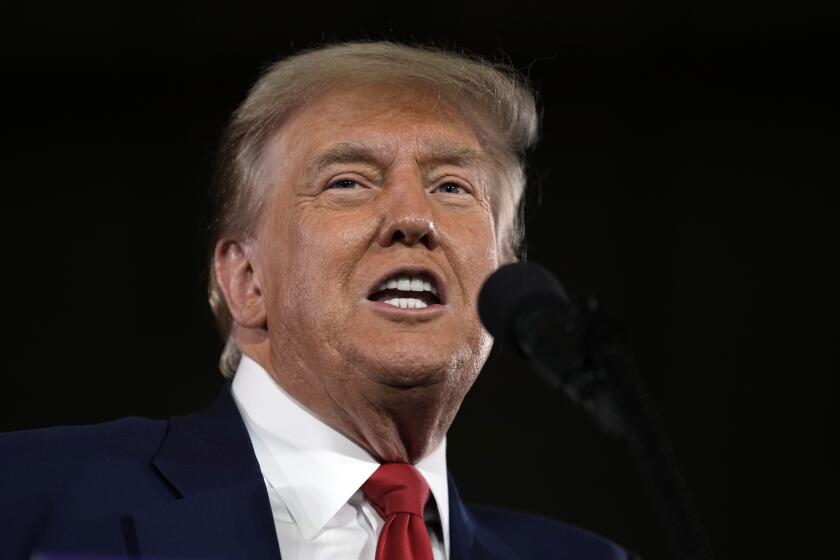FOCUS : Indonesia Trying to Become Asia’s Fifth Tiger : Development: The nation’s efforts to lower barriers to foreign investment and deregulate industries that deal with exporters are paying off.
By removing longstanding barriers to outside investors, Indonesia is generating a foreign investment surge that may help transform the nation, the world’s fifth-most populous.
By adopting measures to woo investors, the island nation is trying to join the ranks of the Four Tigers--financially fierce Singapore, Hong Kong, South Korea and Taiwan.
The Indonesian government during the past three years has reduced tariffs and streamlined licensing procedures, making it easier for potential investors to import and export. It has reduced barriers to foreign investment, lowering the minimum investment requirement to $250,000 from $1 million, for example. The government has also recently deregulated industries that interact with exporters--banking, financial services and shipping.
Investment analysts say the changes have improved Indonesia’s investment climate, citing the government’s recently released 1990 investment report. The report said there was $8.75 billion in new foreign investment commitments in 1990, an 86% increase over the previous year. It was, by far, the largest one-year surge of foreign capital in the country’s history.
The 1990 foreign investment commitments--which do not include investments in the oil, financial services and leasing sectors--were made in 608 separate projects. The 1990 foreign investment commitments alone amount to nearly one-fourth of all the foreign capital invested in Indonesia since 1967, now at $38.68 billion.
The deregulation and barrier-busting measures are designed to open the door to more foreign investors, but just inside the door cheap labor and a huge potential consumer market are the actual investment incentives, said Paul Matulic, a New York-based spokesman for the Indonesian government.
“Two of the most appealing ingredients in the foreign investment formula are the size of the domestic market and cheap labor,” Matulic said. “The countries with the greatest potential in those areas are China and Indonesia. However, Indonesia is more politically stable than China. Indonesia also has a better infrastructure than China.”
However, some impediments to foreign investment remain, said Mike Van Horn, president of the San Rafael, Calif.-based Pacific Rim Consortium, an investment consulting firm. For example, like some other developing countries, Indonesia requires investors to find joint venture partners, he said.
“It’s been difficult to find people you can do business with,” Van Horn said. “Finding a potential partner and completing the necessary negotiations can sometimes take a couple of years. For that reason, some (foreign) companies invest elsewhere.”
Also, top government officials in Indonesia control or own a substantial portion of the country’s key industries. For that reason, it is sometimes necessary to patronize or pay off political luminaries and bureaucrats to do business, Van Horn said.
The government in 1985 sought to deal with one element of the bribery problem--corruption in its customs operations--by selecting SGS, a Swiss firm, to manage import and export dealings.
However, Van Horn said, the Indonesian government has yet to fully address a number of other problems. Among them: infrastructural inadequacies and the lack of patents, trademarks, copyrights and other legal protection for intellectual property.
On the other hand, Van Horn credits the Indonesian government for recently taking steps to make it easier for investors to get access to foreign exchange.
“Many U.S. companies have avoided Indonesia because it had a reputation for being a tough place to do business,” Van Horn said. “It has taken U.S. firms a while to realize the potential, but it’s happening.”
Ray Mataloni, an investment analyst at the U.S. Commerce Department, agrees.
“The level of investment in Indonesia is rising pretty high,” he said. “There’s every reason to believe that their economic plan is working. They have economic growth, and it’s clear that U.S. manufacturers will continue to go there.”
More to Read
Start your day right
Sign up for Essential California for news, features and recommendations from the L.A. Times and beyond in your inbox six days a week.
You may occasionally receive promotional content from the Los Angeles Times.






